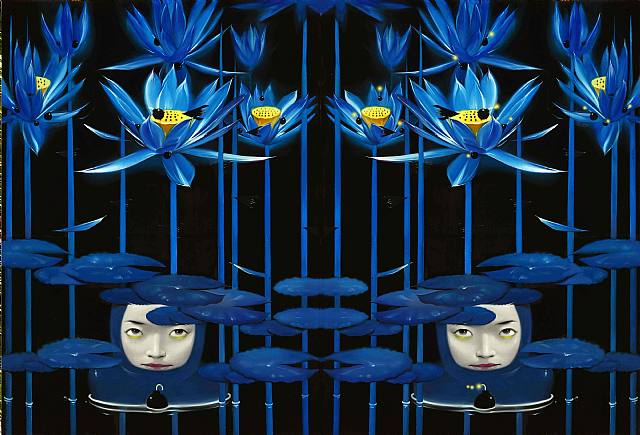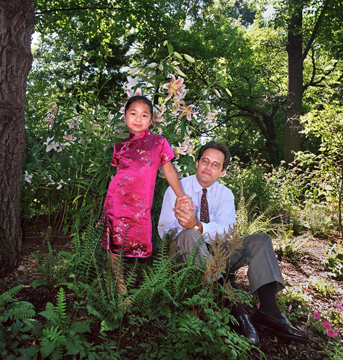
Mu Li "The Fruits of Blue Lotus Flower"
In the final week of the Transformation series, I’ve asked a number of people with diverse points of view to offer their thoughts on the topic.
To kick things off, I introduce Ellen Pearlman, a Brooklyn & Beijing-based writer, curator, critic and film maker, who shares her thoughts about the notion of Art + Transformation in regards to China’s art scene:
Cao Fei, one of the featured artists on Art21, came of age during China’s accelerating transformation playing out through Second Life scenarios issues of fragility, loss and alienation. Other young Chinese artists are also delving into issues of their country’s transformation. International cities like Shanghai just had its first gay festival and though Beijing remains the art hub, second tier industrial and provincial regions like Wuhan and Sichuan and Hangzhou are also adding their voices into the mix. Instead of the block buster exhibits mounted by more recognized artists experiments are exploring themes of infantilism and powerlessness with new Chinese Anime, existentialism and ennui with WAZA, and issues of cultural dislocation and transgression with O Zhang.

O Zhang, "Daddy and I" No. 16
Anime artist Mu Lei, is a painter who develops slick, simple colored canvases with seeming babyish themes and characters. However, couched in their innocuous forms are subtle and encoded signs of resistance and subterfuge. Members of a one-child policy generation these young adults are the hope and focus of their families and both coddled and pressured. Political activity is anathema to them and portray a sense of piercing isolation. Anime and cartoons serve as their refuge.
The WAZA group is a collective of four artists from Wuhan in South East Central China with a population of 13 million reeks beneath its rapid development of existentialism and ennui. WAZA’s work explores these themes through site-specific installations, video and sound in underused or abandoned locations. They investigate a crippling boredom that runs counter to the image of a boom economy and happy times. It is the art of those hovering at the fringe, whose dream of an economic miracle clashes with the hard reality of shrinking horizons.

O Zhang, "It's All Good In the Hood"
The uneasy balance between cultural dislocation and re-integration is a theme of the Chinese-born New York-based photographer O Zhang. She takes seemingly innocent looking portraits of American fathers and their adopted Chinese daughters revealing a hidden tension and innate eroticism. This stance has caused her to run afoul of the Chinese authorities. Her other work is more encoded resistance, where young Chinese proudly wear t-shirts contradicting the location or setting they are photographed in, an effective and silent means of double entendre.
-Ellen Pearlman




Pingback: A Week of Art + Transformation on Art21 — Hrag Vartanian